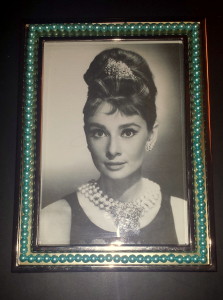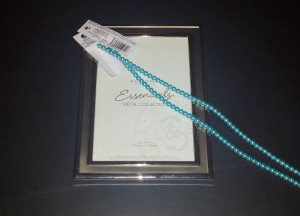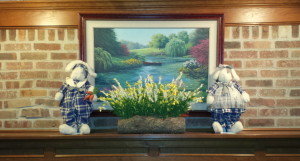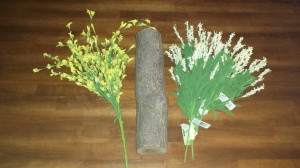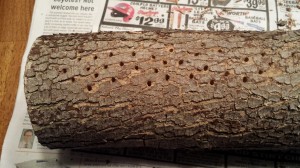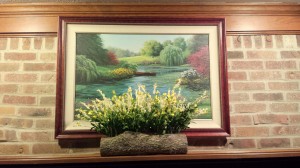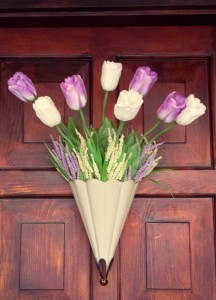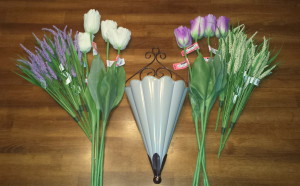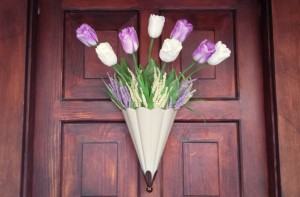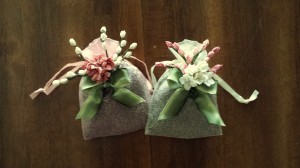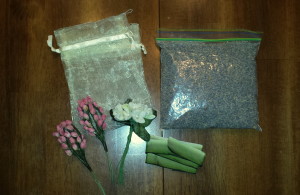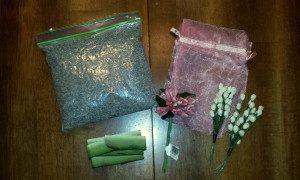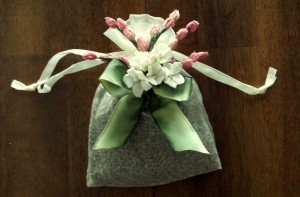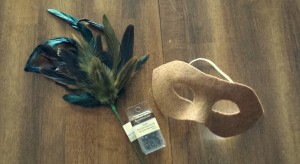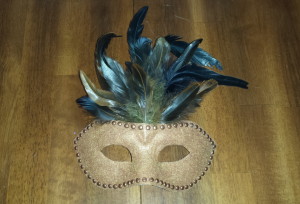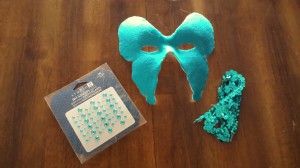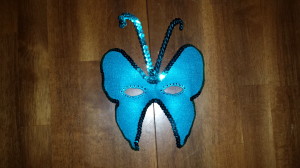In honor of Audrey Hepburn (born: Audrey Kathleen Ruston May 4, 1929 died: January 20, 1993) I was inspired to create this picture frame using a simple silver frame that I decorated with “Tiffany” blue Swarovski pearls. Audrey Hepburn was the famous actress that starred in the classic 1960 romantic comedy film, “Breakfast at Tiffany’s”. (Please see the end of this post for more information about the movie)
“Breakfast at Tiffany’s” frame supplies
- A simple silver frame (select one that has a space between the frame’s interior and exterior edges)
- Several dozen “Tiffany” blue Swarovski pearls, the color has been associated with the famous jewelry store and is used for their sales boxes and bags. (Craft Tip: the trick to this project is to measure the frame and calculate the amount of pearls needed to avoid running out and coming up short!)
- Glue stick
- Pliers
“Breakfast at Tiffany’s” frame instructions –
- Pick up each individual pearl with the pliers, be sure the prongs are placed over the pearls holes. Then put a small amount of glue on the bottom of the pearl.
- While the pearl is still within the grasp of the pliers, place the pearl onto the frame in the space between the frame’s interior and exterior edges. (Craft Tip: Be sure to position the pearl so that the holes are lined up and hidden by each of the other pearls when placed on the frame)
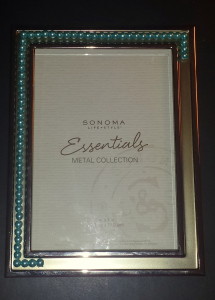
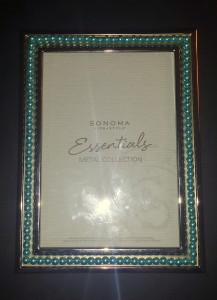
- In keeping with the “Breakfast at Tiffany’s” theme, to finish the project I used a photo from the movie of Audrey Hepburn as Holly Golightly.
“Breakfast at Tiffany’s” movie information and trivia
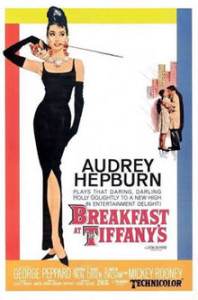 The classic 1961 Paramount movie which stars Audrey Hepburn and George Peppard and also features a supporting cast of Patricia Neal, Buddy Ebsen and Mickey Rooney, the movie is based on the novel written by Truman Capote. “Breakfast at Tiffany’s” was nominated for several Academy Awards and won for Best Original Score and Best Original Song, “Moon River” with music by Henry Mancini and lyrics by Johnny Mercer.
The classic 1961 Paramount movie which stars Audrey Hepburn and George Peppard and also features a supporting cast of Patricia Neal, Buddy Ebsen and Mickey Rooney, the movie is based on the novel written by Truman Capote. “Breakfast at Tiffany’s” was nominated for several Academy Awards and won for Best Original Score and Best Original Song, “Moon River” with music by Henry Mancini and lyrics by Johnny Mercer.
The character of Holly Golightly was one of Audrey Hepburn’s most memorable roles. Hepburn’s portrayal of the naive but eccentric society girl living in New York City was regarded by her to be one of her most challenging roles because she was a normally quiet and introverted person and she needed to play the character in the film as a delightfully extroverted woman.
Movie Trivia –
- “Breakfast at Tiffany’s” premiered at Radio City Music Hall on October 5, 1961 and received wonderful reviews and became an instant hit. Despite the movie’s success, Truman Capote was uphappy with the director, the casting and his altered storyline; he thought Marilyn Monroe should have played the lead role. Others actresses considered for the part were Shirley MacLaine, Kim Novak and a very young Jane Fonda
- The film was set in New York City but very little of the movie was actually filmed on location, the production company only filmed for 8 days in Manhattan. Most of the movie was shot on the Paramount soundstages in Hollywood.
- The world famous Tiffany & Co. store at the corner of Fifth Avenue and 57th Street located in the heart of Manhattan made an unprecedented decision to open their flagship store on a Sunday for the filming of the movie, at the time the store was normally closed on that day of the week. On the day of filming there were over 40 armed guards and several Tiffany sales clerks in the store to prevent any thief of the expensive jewelry.
- In regards to the famous opening scene of the movie, when the character of Holly emerges from a taxi in the early morning hours to stand in front of the Tiffany store windows while eating her breakfast Danish, people always question how the iconic scene seem to be have been filmed on a deserted Fifth Avenue. In reality, not visible on camera, were several hundreds of onlookers watching the filming and according to Blake Edwards, the director of the film, the scene was shot in one take.
- The film established Hepburn as a fashion icon and she looked amazingly svelte especially given that fact that at the time of filming it had been only three months since the birth of her son. Hepburn worked closely with the designer Hubert de Givenchy to create the wardrobe for the film. The version of the “little black dress” Hepburn wore in the film became one of the most influential fashion choices ever in movie history. The concept of the “little black dress” proved so popular because of the movie that since that time most modern women have a similar one in their closets!
- In 2006, Christie’s auctioned the original “little black dress” that Hepburn wore in the film and it sold for $923.000.

